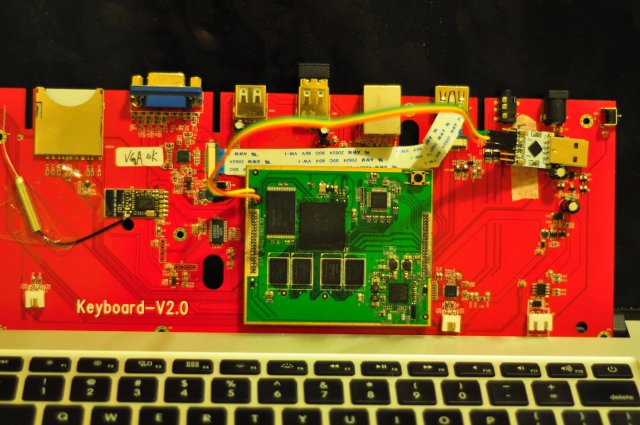Tejinder has just sent me a picture of the internal boards of the CoolShip Android keyboard computer. It’s composed of a main board (Keyboard-V2.0) and a CPU module with RK3066, flash and SDRAM chipsets, PMIC, and video decoder..

Tejinder found the following components on the boards:
- Processor – Rockchip RK 3066
- SDRAM – 4x Hynix H5TQ2G83BFR
- Flash – Hynix h27ubg8t2btr
- 1080p Video decoder – Rockchip RK1000S
- PMIC – 1x Wolfson WM8326G
- DAC – 1x Wolfson WM8960G
- Wifi chip – RTL8188CTV
- USB HUB – GL850G
The two 2-pin connector (one on the left, and the other under the DAC) should be for the speakers, and the 3-pin connector on the right goes to a 8-pin IC connected to the power, so it could be the connection to the 300 mAh battery used to handle unexpected power failure.
You’ll also notice he has connected an UART to TTL debug board to the Rockchip CPU module to access to the serial console, so goodness may come out of this 🙂

Jean-Luc started CNX Software in 2010 as a part-time endeavor, before quitting his job as a software engineering manager, and starting to write daily news, and reviews full time later in 2011.
Support CNX Software! Donate via cryptocurrencies, become a Patron on Patreon, or purchase goods on Amazon or Aliexpress




